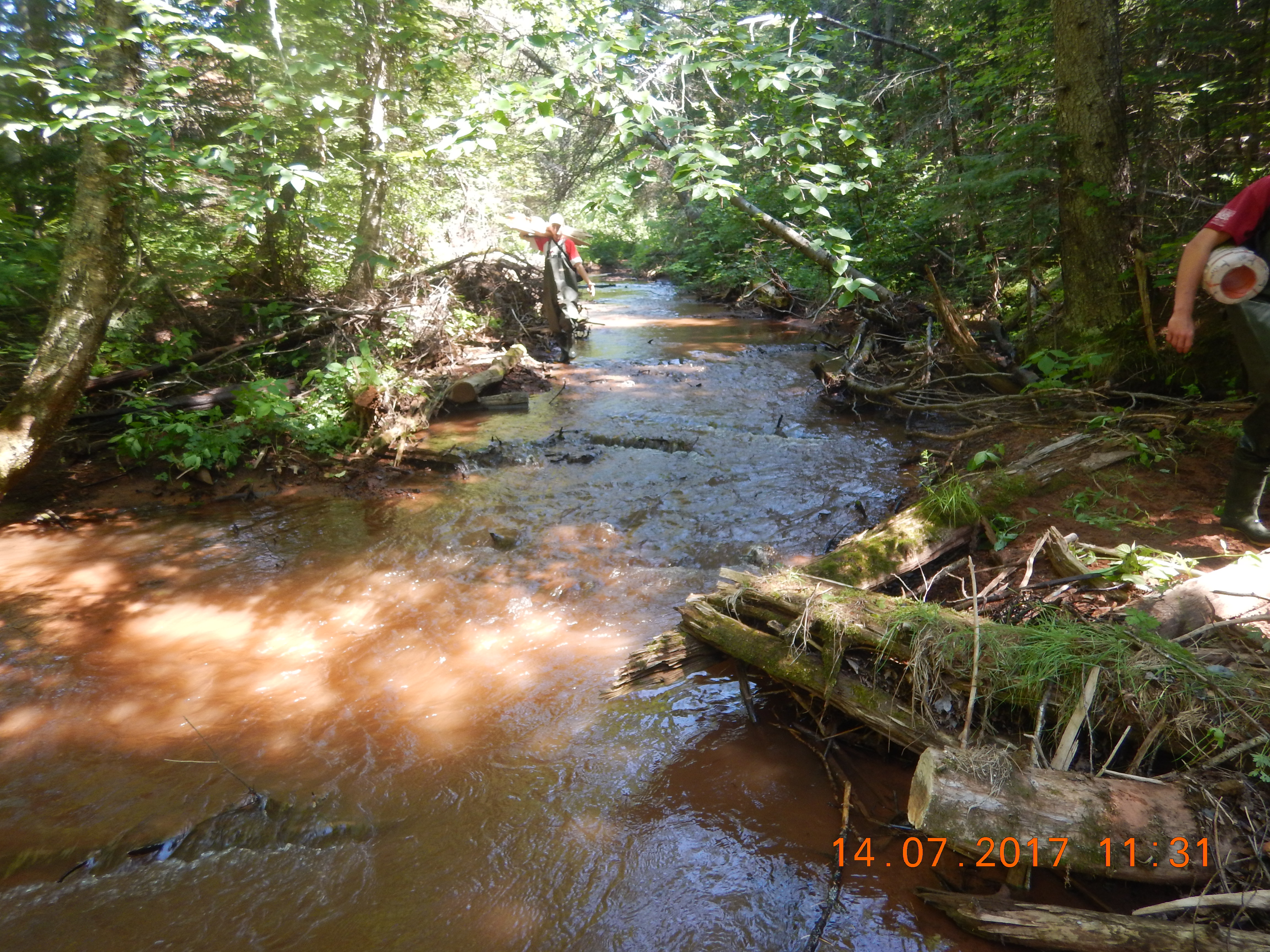La Succursale de Queens-Centre de la Fédération de la faune de l’Î.-P.-É.
janvier 22, 2018 Plusieurs projets entrepris par nos partenaires afin d’aider le saumon atlantique consistent à effectuer des travaux pour rétablir l’habitat et améliorer les conditions.
Plusieurs projets entrepris par nos partenaires afin d’aider le saumon atlantique consistent à effectuer des travaux pour rétablir l’habitat et améliorer les conditions.
C’est le cas pour la Succursale de Queens-Centre de la Fédération de la faune de l’Î.-P.-É. (SQCFF).
Grâce à une subvention de 25 300 $ obtenue en 2017, le groupe a concentré ses efforts sur les rivières West et Clyde. La rivière Clyde est un sous-bassin de la rivière West. Le projet consiste à rétablir l’habitat du poisson et la zone riveraine qui se sont détériorés. Pour ce faire, on applique principalement des techniques intensives de restauration, et on encourage une bonne intendance de la part des propriétaires fonciers dans le secteur littoral du bassin versant.
Le but en général est de rétablir la rivière et le milieu environnant à leur état précédent pour qu’ils soient propices au développement d’une population durable et abondante de saumon atlantique et de truite de ruisseau.
« Nous avons commencé à travailler avec la FCSA en 2011, et depuis, nous avons réalisé des progrès incroyables, révèle Jordan Condon. Depuis ce moment-là, nous travaillons activement pour enlever de grandes quantités de dépôts de sédiments des zones d’habitat essentielles et du cours supérieur. Les secteurs de frai de saumon identifiés constituent un élément essentiel de l’habitat. Afin d’améliorer ces frayères, nous procéderons au râtelage manuel du substrat de frai de gravier et de galets pour enlever les sédiments, ou nous utiliserons des tapis de broussailles et des pièges à sédiments pour enlever directement les sédiments de la rivière. »
- Condon fait remarquer que le problème des sédiments dans la rivière West est le plus grand facteur limitatif; alors, la gestion des dépôts de sédiments et des sources ponctuelles de sédiments sur le littoral est une partie cruciale des efforts du groupe pour améliorer le bassin versant.
« Ce n’est que durant les deux dernières années que notre groupe a commencé à constater des retours de stocks de poissons encourageants. Des progrès sont constatés, mais il reste encore beaucoup de travail à faire! » Beaucoup de travail a été effectué dans les trois principaux effluents – Quinn’s, Howell’s, et Skye Brook – ainsi que dans le cours supérieur de Brookvale. « Au cours des prochaines années, nos efforts seront axés sur les dernières sections de la rivière où des travaux de restauration n’ont pas encore été effectués, ainsi que sur l’entretien des sections déjà nettoyées. Nous intensifierons nos efforts pour des composantes essentielles (secteurs de frai ou habitat juvénile). Nous travaillerons également avec les résidents ou les communautés à l’échelle locale pour les engager dans le processus autant que possible ainsi que pour encourager les jeunes et les moins jeunes à s’adonner à la pêche à la ligne. »
